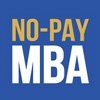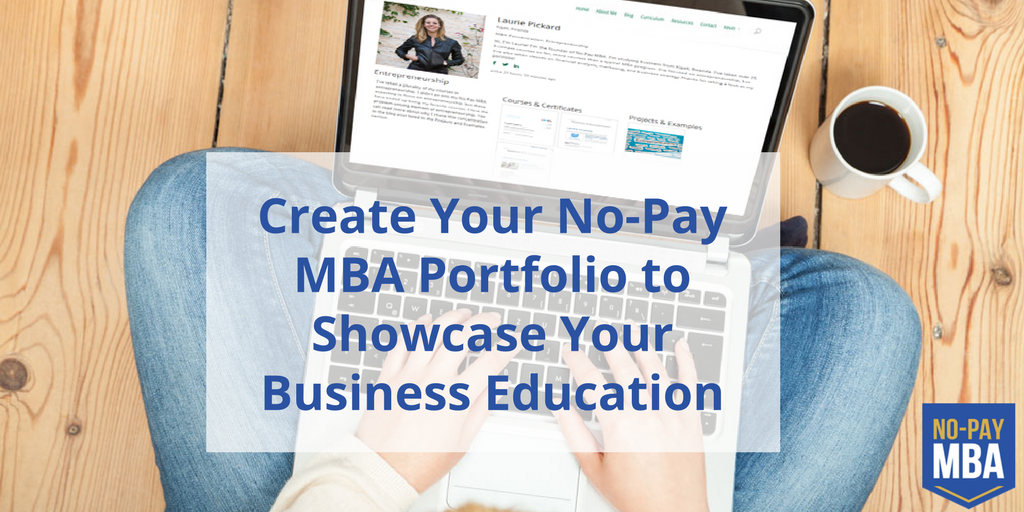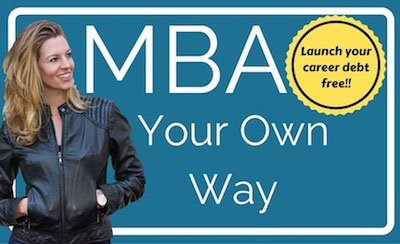For the past nearly two years I have been taking free online courses in an attempt to replicate an MBA education. Throughout this journey, I’ve discovered the importance of having a place where people can see for themselves what I’ve learned in my courses. For me, this place is the No-Pay MBA website, which functions as a portfolio where anyone can have a look at how I’ve put together my education and what I’ve gotten out of it.
Portfolios have long been used by people in arts careers – obviously, if you want to know if someone is a good photographer, it’s better to look at examples of her work than to read a resume. The same goes for web design, app development, and other technology-based arts. But people in other careers are increasingly building online, shareable portfolios to showcase their professional abilities.
If you’re not in an arts or technology field, you may still need a portfolio, especially if there is anything non-traditional about your career path or your education, or if you are seeking to switch fields. Particularly if you are studying business via MOOC or are planning to start a No-Pay MBA, you should give some serious thought to how and where you will present evidence of what you’ve learned.
Why MOOC students need portfolios
There are a few reasons why you need a portfolio, and not just a resume, if you’re getting your education via MOOC.
First, a good portfolio tells a story. Where a resume has a dry, factual feel, a portfolio can give a lot more of YOU. Your educational portfolio tells the story of how you learned what you learned. I’ve seen a lot of transcripts masquerading as portfolios – don’t make the mistake of thinking that your certificates alone tell the whole story. You want more than a wall of certificates; you want to show how your courses fit together, how you put your learning into practice, and what you are capable of doing as a result.
Second, a portfolio gives details. On your resume, you give an overview of what you studied. An educational portfolio zooms in on your education, showing much more than course titles. It can include examples of your work, your reflections on what you’ve learned, and your take on the value of the education.
Third, a portfolio allows people to “see for themselves.” Without a degree from a well-known institution, it’s important to give people a way to understand and assess what you’ve learned. By having both your certificates and examples of your best work in one place, you give people an opportunity to do that. Remember that many people still don’t know what MOOCs are. Rather than send them to Coursera’s website, you want to give people who are curious about your studies a way to see your education in action.
Where to create your portfolio
Up to now, MOOC business students haven’t had a lot of great options when it comes to showing their work in an educational portfolio.
A website called Accredible used to offer a nice platform for uploading MOOC certificates, course projects, and any other documents pertaining to one’s education. But Accredible has pivoted away from providing these services to individual students.
LinkedIn will allow you to post your certificates from a growing number of MOOC platforms, including Coursera and edX. However, you can’t organize your certificates on LinkedIn, so they end up being just a mass of icons at the bottom of your profile. That’s okay for a transcript, but it doesn’t do the storytelling work of a good portfolio.
In my opinion, until now the only good option available for creating a MOOC educational portfolio was to make your own website, which is time-consuming and expensive, and involves a steep learning curve if you aren’t already website savvy.
But that’s changing today.
I’ve spent the past several months creating an area on this site where anyone in the world can catalogue and display the skills they are building through online coursework. Starting today, you can create your educational portfolio on No-Pay MBA.
When I created the portfolio feature on No-Pay MBA, I set out to create the best place on the web for MOOC students to showcase their studies. You can be the judge of whether I’ve achieved that goal.
Here’s what should go in your educational portfolio
I’ve alluded to some of the things that should go into an education portfolio. Here is a complete list.
- A good, professional quality photo of you.
- An overarching description of your learning objectives and how you’ve sought to meet them.
- Defined skill sets with examples of projects you’ve done to put those skills into practice
- Certificates from your courses
- Links to your other work that can be found elsewhere on the web
- Links to relevant social profiles, especially LinkedIn
No-Pay MBA portfolios are organized by skill set, so if you’ve already taken some courses you can start by grouping your certificates and projects into skill sets and uploading them onto the platform. For more tips on how to set up your portfolio, have a look at the video below:
I hope you have as much fun building your portfolio as I did creating this feature. Let me know how it goes!
Ready to get started? Click here to register for your free portfolio on No-Pay MBA!




